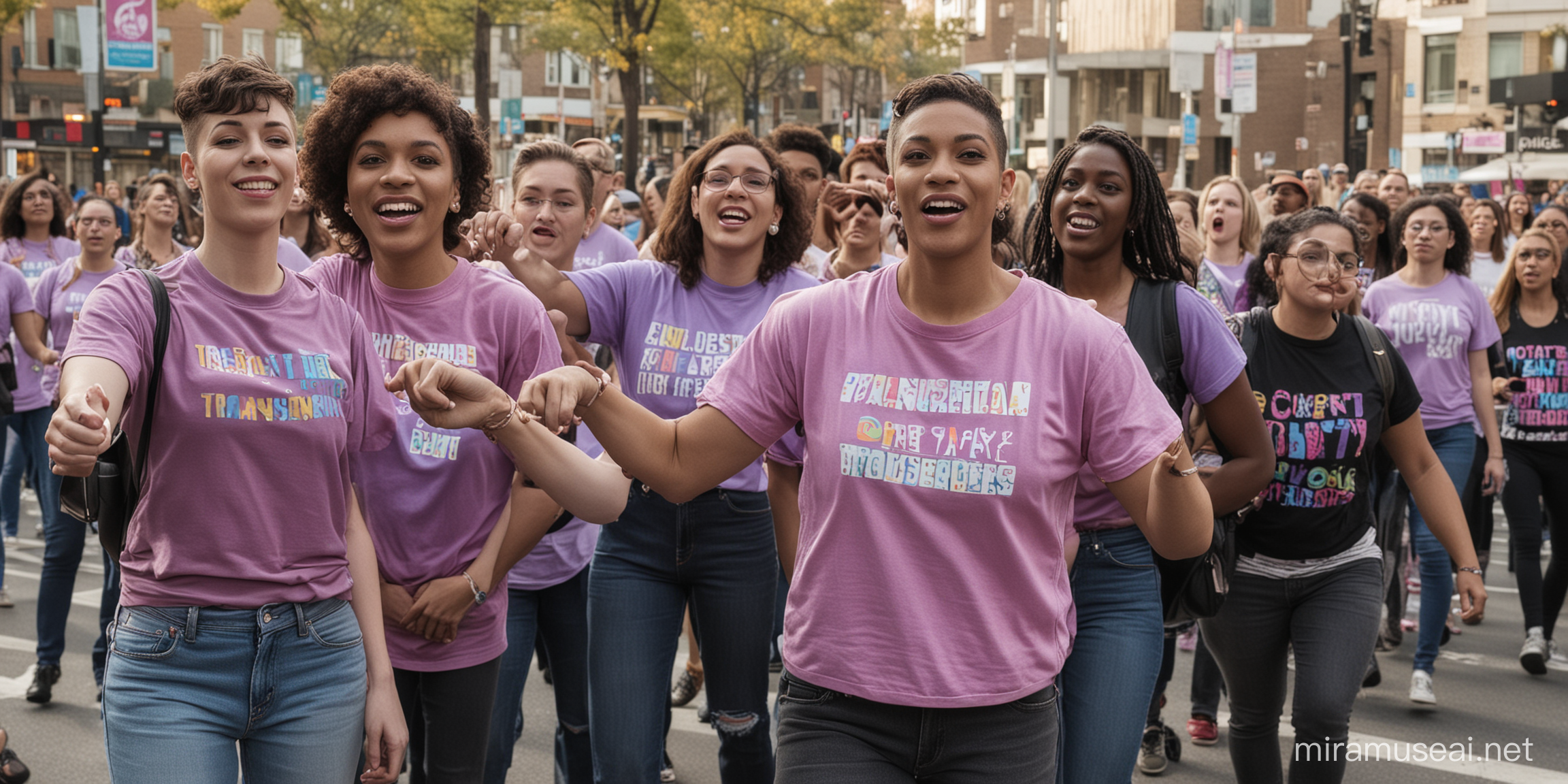The International Transgender Day of Visibility (TDOV) is observed annually on March 31st to celebrate transgender, non-binary, and gender non-conforming individuals while raising awareness about the challenges they face and advocating for their rights and visibility in society. This day holds immense significance in promoting inclusivity, acceptance, and equality for transgender communities worldwide. In this comprehensive exploration, we will delve into the history, significance, goals, challenges, and achievements associated with the International Transgender Day of Visibility.
Understanding Gender Identity and Transgender Experience
Before delving into TDOV, it’s crucial to understand the concepts of gender identity and transgender experiences. Gender identity refers to a person’s internal sense of their gender, which may align with the sex assigned at birth (cisgender) or differ from it (transgender). Transgender individuals identify with a gender different from their assigned sex, and their experiences encompass various gender identities, expressions, transitions, and challenges in navigating societal norms and expectations related to gender.
Origins and History of International Transgender Day of Visibility
The International Transgender Day of Visibility was first observed in 2009 and was founded by Rachel Crandall-Crocker, a transgender activist from Michigan, USA. The day aims to complement Transgender Day of Remembrance (November 20th), which honors transgender individuals who have lost their lives due to violence and discrimination. TDOV emerged as a positive and affirming counterpart, focusing on celebrating transgender resilience, visibility, achievements, and contributions to society.
Goals and Objectives
- Celebrating Transgender Resilience: TDOV provides a platform to celebrate the courage, strength, and resilience of transgender individuals in embracing their authentic selves, navigating challenges, and thriving despite societal stigma and discrimination.
- Raising Visibility and Awareness: The day seeks to raise awareness about transgender identities, experiences, and issues, challenging stereotypes, misconceptions, and discrimination prevalent in communities, institutions, and media representations.
- Advocating for Rights and Equality: TDOV advocates for the rights, dignity, and equality of transgender, non-binary, and gender non-conforming individuals, including access to healthcare, legal recognition, employment opportunities, education, and protection from discrimination and violence.
- Fostering Inclusivity and Acceptance: By promoting visibility, education, and dialogue, TDOV encourages inclusive spaces, policies, and attitudes that respect and affirm diverse gender identities and expressions within families, workplaces, schools, healthcare settings, and society at large.
Themes and Activities
Each year, TDOV is marked by various themes, activities, and initiatives organized by LGBTQ+ organizations, activists, allies, and communities worldwide. These may include:
- Visibility Campaigns: Social media campaigns, hashtags (#TransDayofVisibility), and digital storytelling initiatives highlight transgender voices, stories of resilience, achievements, and contributions across diverse fields such as arts, sciences, activism, politics, sports, and entertainment.
- Educational Workshops and Panels: Events featuring discussions, workshops, panels, and lectures focus on transgender rights, healthcare disparities, legal protections, intersectionality, allyship, mental health, and strategies for creating inclusive environments.
- Community Gatherings and Celebrations: Local events, parades, rallies, art exhibitions, film screenings, pride festivals, and cultural performances celebrate transgender identities, talents, and diversity while fostering a sense of community, solidarity, and empowerment.
- Advocacy and Policy Initiatives: Advocacy campaigns, petitions, policy dialogues, and legislative efforts highlight the importance of legal recognition, anti-discrimination laws, gender-affirming healthcare, inclusive education, workplace protections, and social services for transgender individuals.
Challenges and Issues
Despite progress in visibility and advocacy, transgender communities continue to face significant challenges and systemic barriers globally:
- Discrimination and Violence: Transphobia, discrimination, hate crimes, bullying, harassment, and violence against transgender individuals persist in various settings, leading to profound social, emotional, and physical harm.
- Legal Recognition: Many countries lack legal recognition and protection for transgender identities, leading to challenges in accessing identity documents, healthcare services, education, employment, housing, and participation in public life.
- Healthcare Disparities: Transgender individuals often encounter barriers in accessing gender-affirming healthcare, mental health services, hormone therapy, gender confirmation surgeries, and culturally competent care due to stigma, cost, lack of trained providers, and institutional biases.
- Social Stigma and Marginalization: Cultural norms, religious beliefs, media representations, and societal attitudes perpetuate stereotypes, misinformation, and marginalization, contributing to social exclusion, isolation, and mental health disparities among transgender populations.
Achievements and Progress
Despite challenges, significant achievements and progress have been made in advancing transgender rights, visibility, and inclusion:
- Legal Victories: Many countries have enacted laws and policies recognizing gender identity, prohibiting discrimination based on gender identity or expression, and providing legal pathways for gender marker changes on identity documents.
- Healthcare Reforms: Healthcare institutions and providers are increasingly adopting guidelines, protocols, and training programs to provide gender-affirming care, mental health support, and comprehensive services for transgender patients.
- Visibility and Representation: Increased visibility and representation of transgender individuals in media, literature, arts, politics, sports, and leadership roles contribute to positive role models, awareness, and acceptance within society.
- Community Support: LGBTQ+ organizations, community centers, support groups, helplines, and online platforms offer resources, advocacy, social services, peer support, and safe spaces for transgender individuals and their allies.
Future Directions and Commitments
Looking ahead, continued efforts are needed to advance transgender rights, visibility, and inclusion:
- Legal Protections: Advocacy for comprehensive anti-discrimination laws, legal recognition of gender identity, access to healthcare, inclusive education policies, and gender-affirming legal processes remains a priority.
- Healthcare Equity: Ensuring equitable access to gender-affirming healthcare, mental health services, HIV prevention and care, reproductive health services, and substance abuse treatment without discrimination or barriers is essential.
- Education and Awareness: Promoting LGBTQ+-inclusive curricula, training programs for educators, healthcare providers, law enforcement, and workplaces, and challenging stereotypes through media representation and public campaigns are vital for fostering acceptance and understanding.
- Intersectional Advocacy: Recognizing and addressing intersecting forms of discrimination based on race, ethnicity, class, disability, immigration status, and other identities is crucial for promoting justice, equity, and empowerment within transgender communities.
- Allyship and Solidarity: Building alliances, partnerships, and coalitions among LGBTQ+ organizations, human rights groups, policymakers, businesses, faith communities, and civil society actors can amplify voices, mobilize resources, and advocate for systemic change.
Conclusion
The International Transgender Day of Visibility serves as a powerful platform to celebrate, honor, and advocate for the rights, dignity, and visibility of transgender, non-binary, and gender non-conforming individuals worldwide. By fostering inclusive spaces, promoting education, challenging discrimination, and amplifying diverse voices and stories, we can work towards a more just, compassionate, and equitable world for all gender identities and expressions. The journey towards full equality and acceptance continues, guided by principles of respect, solidarity, and human rights for every individual,
Continue generating






